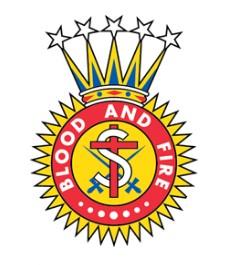The Salvation Army’s work in Hong Kong began in 1930. Its aim was to provide social services and to spread the Gospel through mission.
The first Salvation Army home in the city, named the Salvation Army Women’s Industrial Home, was founded in rented premises on Prince Edward Road in 1931. For the first two years, most of the girls admitted were destitute child domestic maids, known as mui tsai , who were sent to the home by the Secretary for Chinese Affairs.
In 1933, the government asked The Salvation Army to also accept young offenders from the Juvenile Courts. Then in 1934, the home was relocated to larger rented premises at No. 2 Embankment Road. But soon this home was also found to be too small and inadequate to cope with not only the young offenders, but also short-term remand cases, as well as orphans or girls lacking adequate food and care at home, which in 1947 were some 247 cases.
The Kwai Chung Girls’ Home - In August 1947, The Salvation Army acquired the Kwai Chung site with the aim of relocating the girls’ home there. The total cost for the two acres of land in Lei Muk Road, the acquisition and renovation of the three-storey main building and equipment was roughly $210,000. This was funded mainly by joint grants from the government and from the Salvation Army in London, but also by a donation of $10,000 provided by Mr Aw Boon-haw of Tiger Balm fame, and donations from other local sources. The opening ceremony for The Kwai Chung Girls' Home was on 28th October 1948.
The main building was of Art Deco influence in design and housed a sitting room, a dining room, a sewing room and a chapel on the ground floor, bedrooms for a maximum capacity of 50 girls on the first floor, and the Matron’s quarters were on the second floor.
The Kwai Chung Girls’ School - As the attention of the Salvation Army became more focused on young offenders, the home was changed to run along the lines of an approved school, (the first of its kind in East Asia outside of Japan) and renamed the Kwai Chung Girls’ School.
In May 1952, the Home was declared a “place of refuge”, so that it could also receive women and girls in need of help and protection. Girls could arrive in poor health and be returned to normal health there. The Home was visited weekly by a doctor. The girls shared domestic duties, and had time for study, for work (such as cooking, needlecraft, sewing and gardening), and for recreation. The aim was that they should become self-reliant citizens when they left the home, and the Home would also secure employment for them when they were ready to leave.
In 1955, the Girl’s Home was reported to have its own chapel, schoolrooms, workroom, dining room, sick bay, dormitories, and new recreation room with facilities for badminton, indoor tennis and basketball.
During the 1960s there were more changes, and the Home, still catering for about 50 girls, became more focused on girls in need of care and protection.
In January 1965, the Kwai Chung home was closed for repurposing and the girls were transferred to the Ma Tau Wei Girls’ Home, which had been newly opened by the government.
The Salvation Army Kwai Chung Social Centre - To meet the needs of working mothers in the Kwai Chung area, the ground floor of the Girls’ Home building was converted to a day nursery for children of two to six years old, run by house mothers and several mid-teens girls, who received training in child care. In addition, the first floor was converted to a hostel for working women, mainly those working in the factories in Kwai Chung and Tsuen Wan. The name now became The Salvation Army Kwai Chung Social Centre. As provision was also needed for unmarried mothers, part of the building was developed as a maternity unit and home for these mothers.
The Girls’ Home – there were still numbers of girls in need of care and protection and the Home at Ma Tau Wei was unable to cope so in 1971 the Social Centre underwent another change becoming once again The Girls’ Home, catering for those needing care and protection but also for girls with behavioural needs, numbering some 50 girls aged between 12 and 18.
In 1994, the Salvation Army closed the Girls’ Home and it ceased to be a place of refuge. The reason for this was due to the difficulties in maintenance, and the new trend of breaking down the large homes into small group living units. After closing the Home, the Army established three small group homes in Tai Wo Hau.
The Girls’ Home provided residential rehabilitation and protection services for delinquent and destitute girls for decades. Through the Girls’ Home, the church services provided for local villagers in the schoolroom, and the free clinic in what was its corps hall, the Salvation Army demonstrated its mission to spread the Gospel and serve the community, which are typical of the roles played by Christian charitable organisations.
Source: HK Government Historic Building Appraisal N203
Current view of the building and article in The Standard The Salvation Army logo can still be seen on the LH side of the tower.
